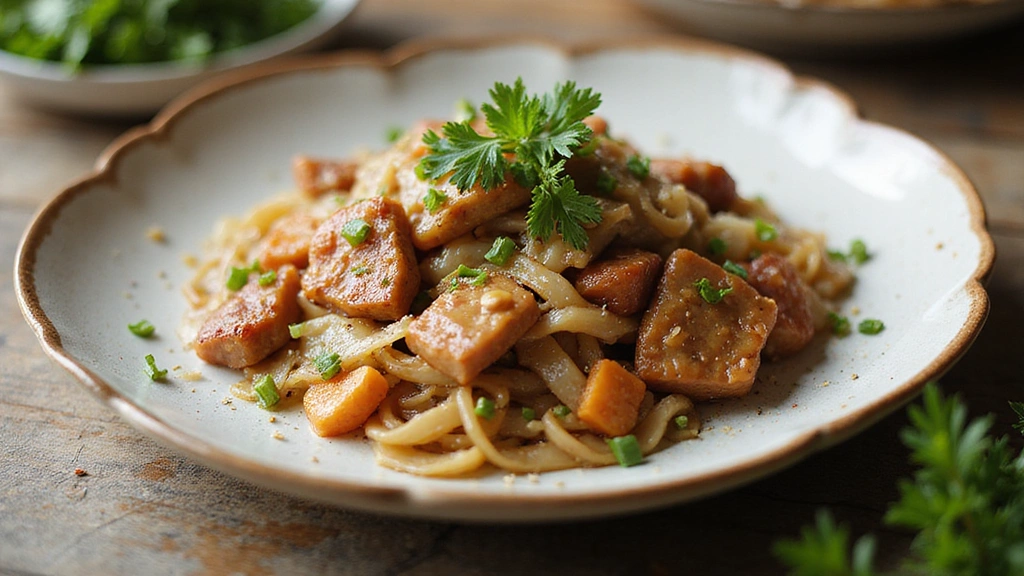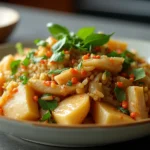Chinese Pork and Cabbage is a symphony of flavors that embodies the essence of home-cooked comfort food.
The tender pork melds beautifully with the crisp cabbage, creating a satisfying texture that delights the senses.
I first encountered this dish at a family gathering where the aroma wafted through the air, drawing everyone to the table with anticipation.
Perfect for busy weeknights, this recipe not only comes together quickly but also offers a healthy, well-balanced meal that your family will love.
The History and Cultural Significance
• Chinese Pork and Cabbage has its roots in traditional Chinese cuisine, specifically in the northern regions where cabbage is a staple vegetable.
• The dish has evolved over the years, integrating various cooking methods and flavors that reflect regional preferences.
• In China, pork is often associated with prosperity and is served during festive occasions, symbolizing good fortune and abundance.
• While variations exist across different provinces, the authentic version maintains a balance of savory and sweet flavors that distinguishes it from other meat and vegetable dishes.
Recipe Overview
Nutritional Information (per serving)
Ingredients
Essential Equipment Guide
Wok: A wok is essential for achieving the high heat needed for stir-frying, which allows for a quick and even cooking process. Look for a heavy-bottomed, non-stick option that retains heat well to prevent sticking.
Chef’s Knife: A sharp chef’s knife is crucial for precision slicing of vegetables and pork, ensuring even cooking and optimal presentation. Invest in a high-quality knife that feels comfortable in your hand for best results.
Cutting Board: A sturdy cutting board provides a safe and stable surface for chopping ingredients. Choose a non-slip board that is easy to clean and large enough to accommodate all your prep work.
Preparation Methods
Marinating the Pork: Marinating the pork in soy sauce and a touch of sesame oil not only adds flavor but also tenderizes the meat. Aim for at least 15 minutes of marination for the best results, using a resealable bag to ensure even coverage.
Stir-Frying: This technique involves cooking ingredients quickly over high heat with constant stirring. It’s important to have all ingredients prepped and ready to go, as stir-frying happens swiftly, preventing overcooking.
Deglazing: After cooking the pork, deglazing the pan with a bit of water or broth helps lift the flavorful browned bits stuck to the bottom. This adds depth to your dish and ensures nothing goes to waste.
Step 1: Prepare Ingredients

Begin by gathering all ingredients and tools needed for the recipe.
Wash and chop the cabbage, carrot, and scallions, and set them aside.
Slice the pork shoulder into thin strips for quick cooking.
Ensure all ingredients are prepped before starting to cook for a smooth workflow.
Step 2: Marinate the Pork
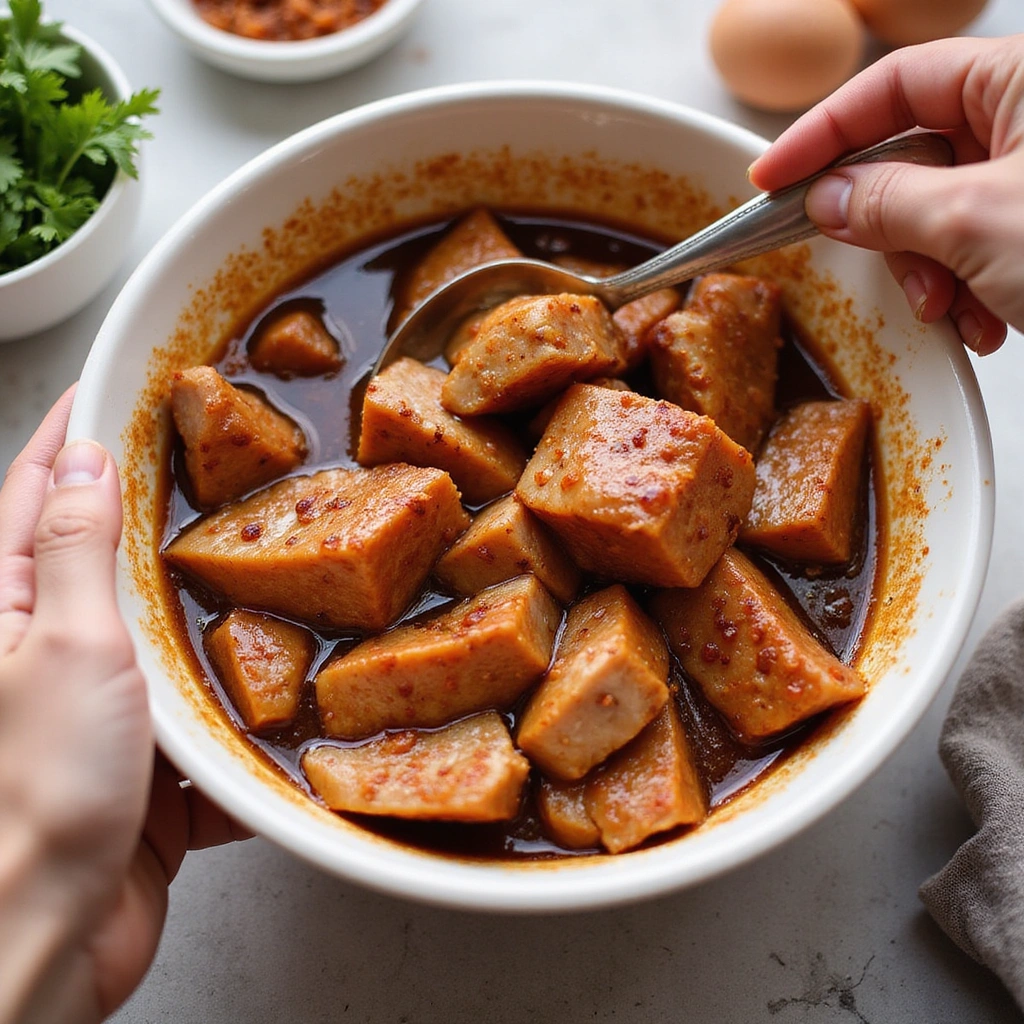
In a mixing bowl, combine the sliced pork with soy sauce and sesame oil.
Toss the pork to ensure it’s evenly coated in the marinade.
Let the pork marinate for at least 15 minutes at room temperature.
This step enhances the flavor and tenderness of the meat, making it more delicious.
Step 3: Heat the Wok
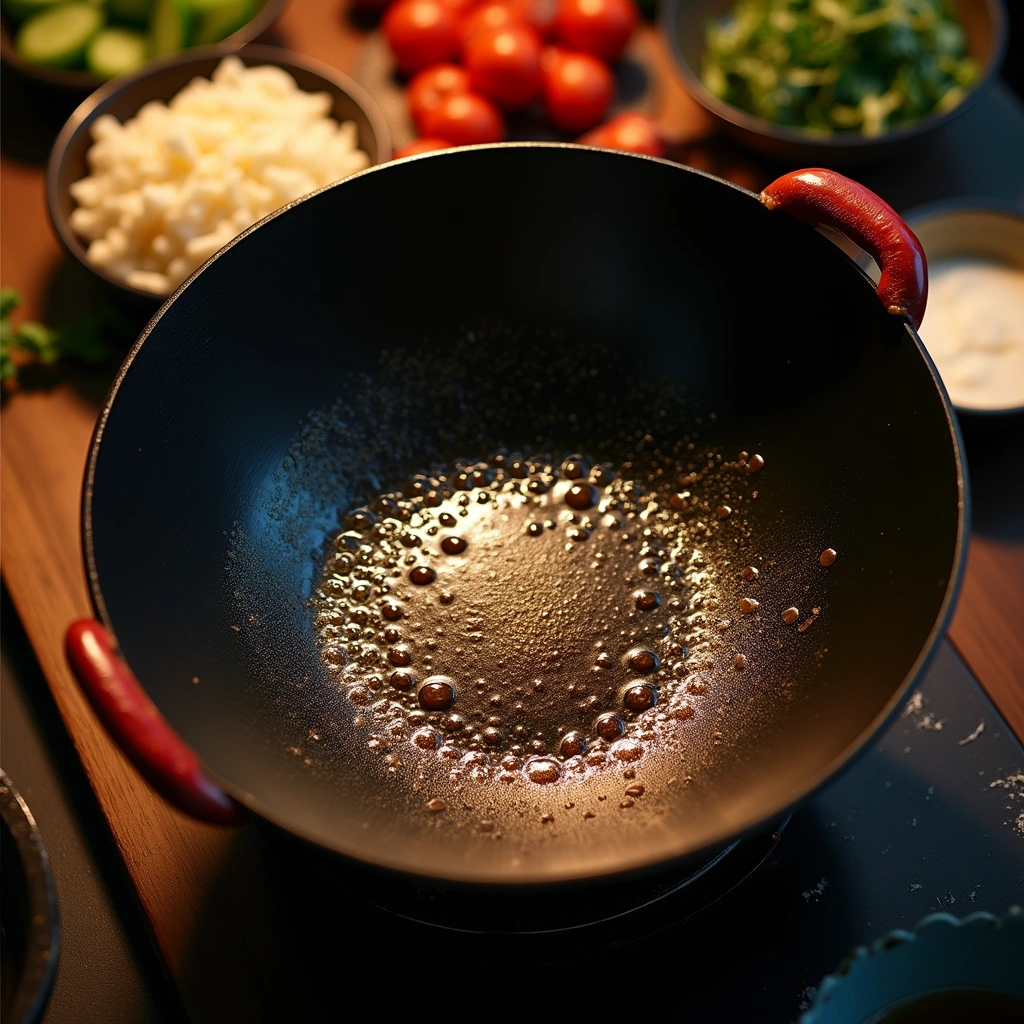
Place your wok on high heat and allow it to become very hot before adding any oil.
A properly heated wok ensures that the ingredients sear quickly, locking in their juices.
Add a tablespoon of cooking oil, swirling it to coat the bottom evenly.
Ensure the oil shimmers but does not smoke, indicating it’s ready for cooking.
Step 4: Stir-Fry the Pork

Add the marinated pork to the hot wok in a single layer and let it sear for about 2 minutes.
Avoid overcrowding the pan to ensure even cooking; work in batches if necessary.
Stir-fry the pork until it is browned and just cooked through, about 4-5 minutes total.
Look for a rich golden-brown color to indicate proper cooking.
Step 5: Add Aromatics
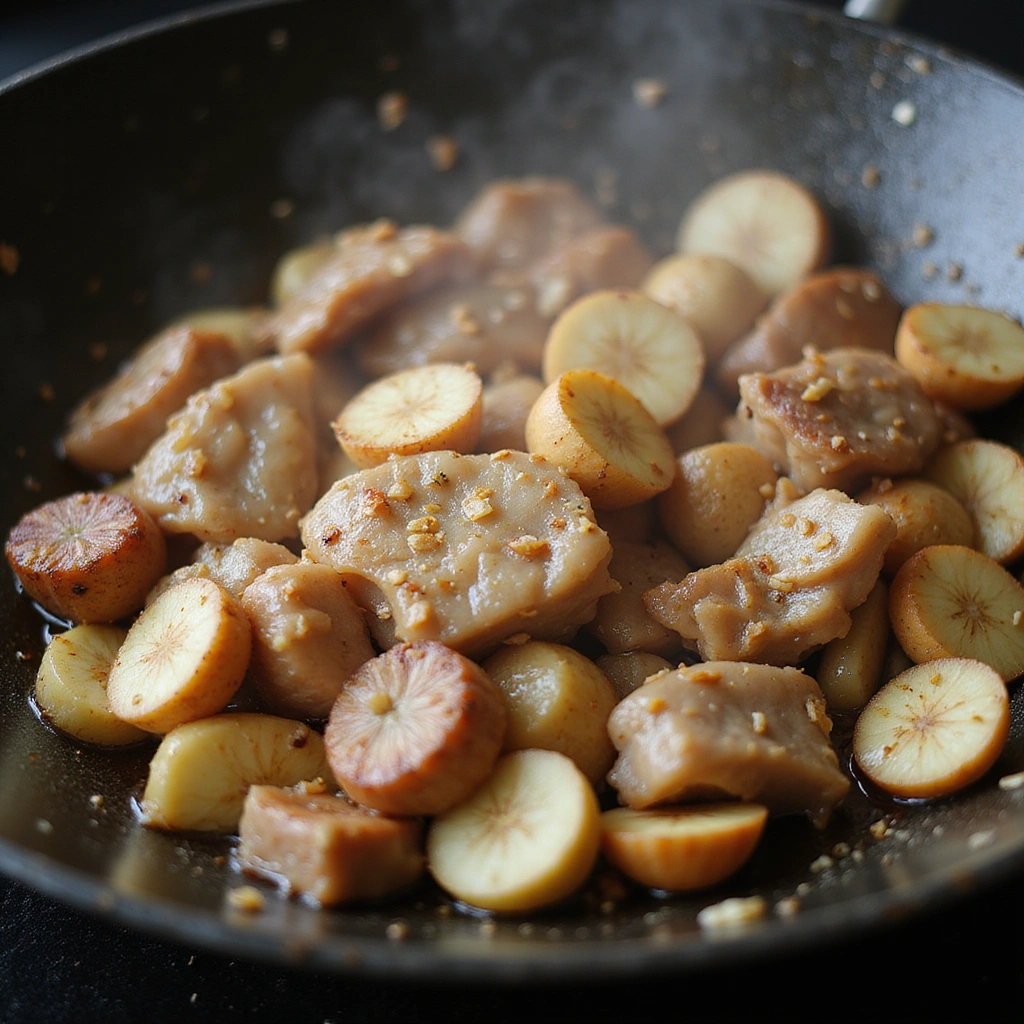
Once the pork is cooked, push it to one side of the wok to make space for the aromatics.
Add minced garlic and grated ginger to the empty side, allowing them to cook for about 30 seconds.
Stir constantly to prevent burning while releasing their fragrant aroma.
Once fragrant, mix the aromatics with the pork, ensuring everything is combined well.
Step 6: Incorporate Vegetables
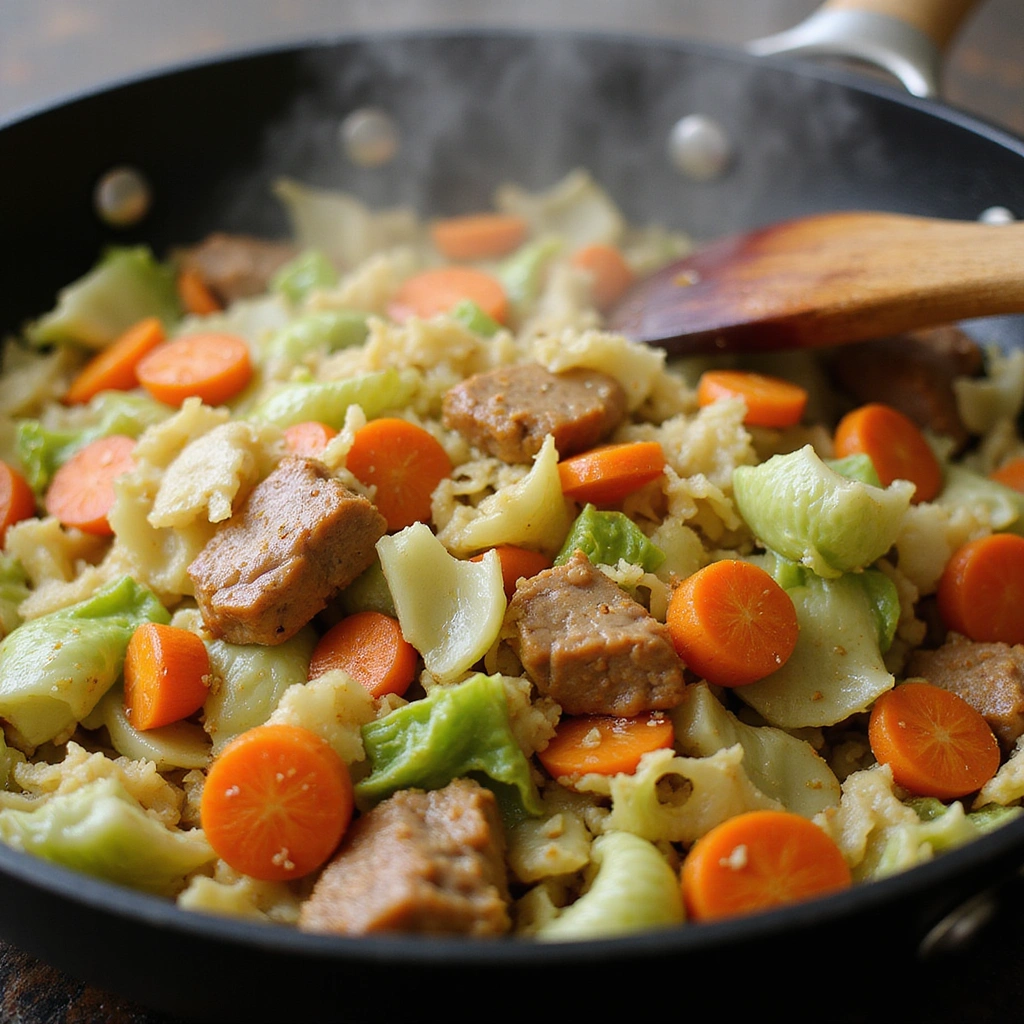
Add the shredded cabbage and julienned carrots to the wok, mixing them with the pork and aromatics.
Stir-fry for about 3-4 minutes until the vegetables are tender but still crisp.
Make sure to keep the mixture moving to ensure even cooking and prevent sticking.
The vibrant colors of the vegetables should remain bright and appealing.
Step 7: Add Sauce
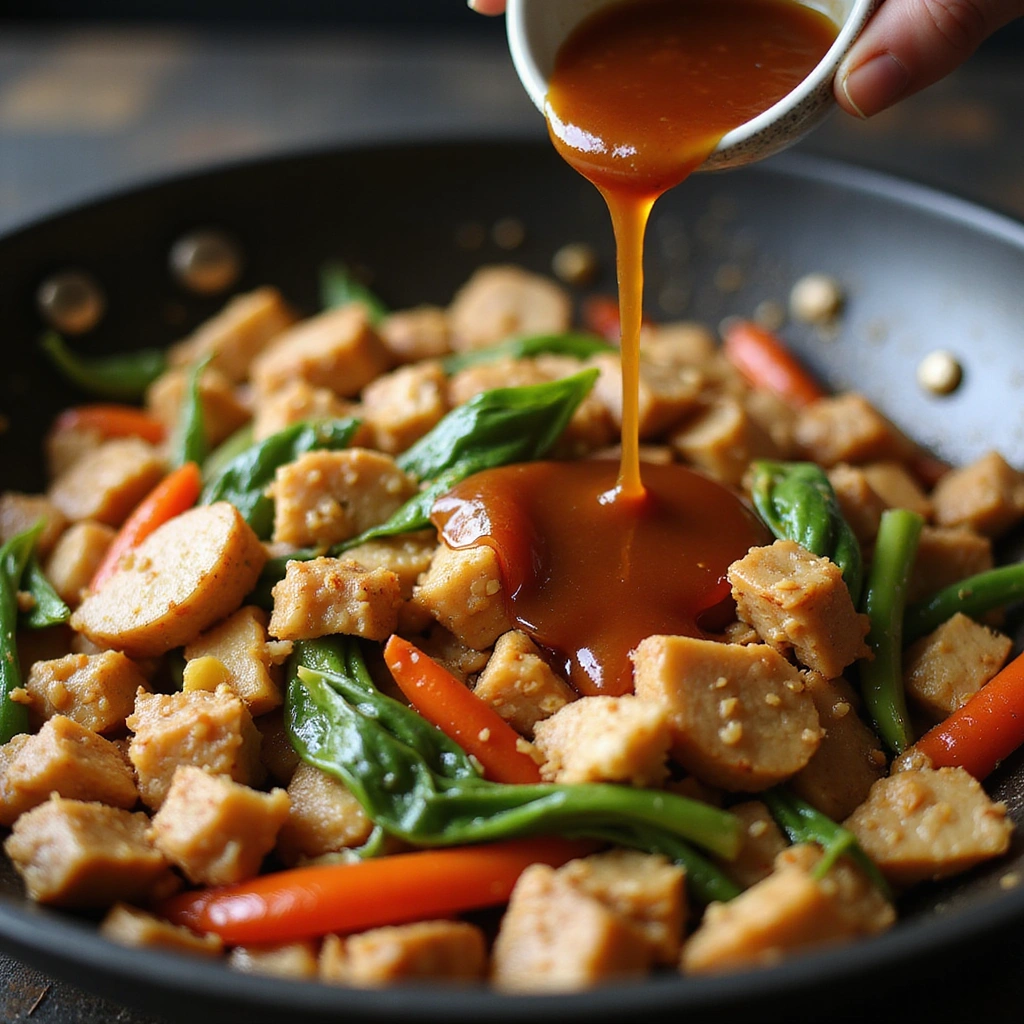
Pour the prepared sauce over the stir-fried mixture, tossing everything to coat evenly.
Let the sauce simmer for a minute, allowing it to thicken slightly and meld with the other flavors.
Taste and adjust seasoning if needed, adding more soy sauce or a dash of pepper for extra zing.
The mixture should be glossy and flavorful, with the sauce enhancing the dish without overpowering it.
Step 8: Final Touches
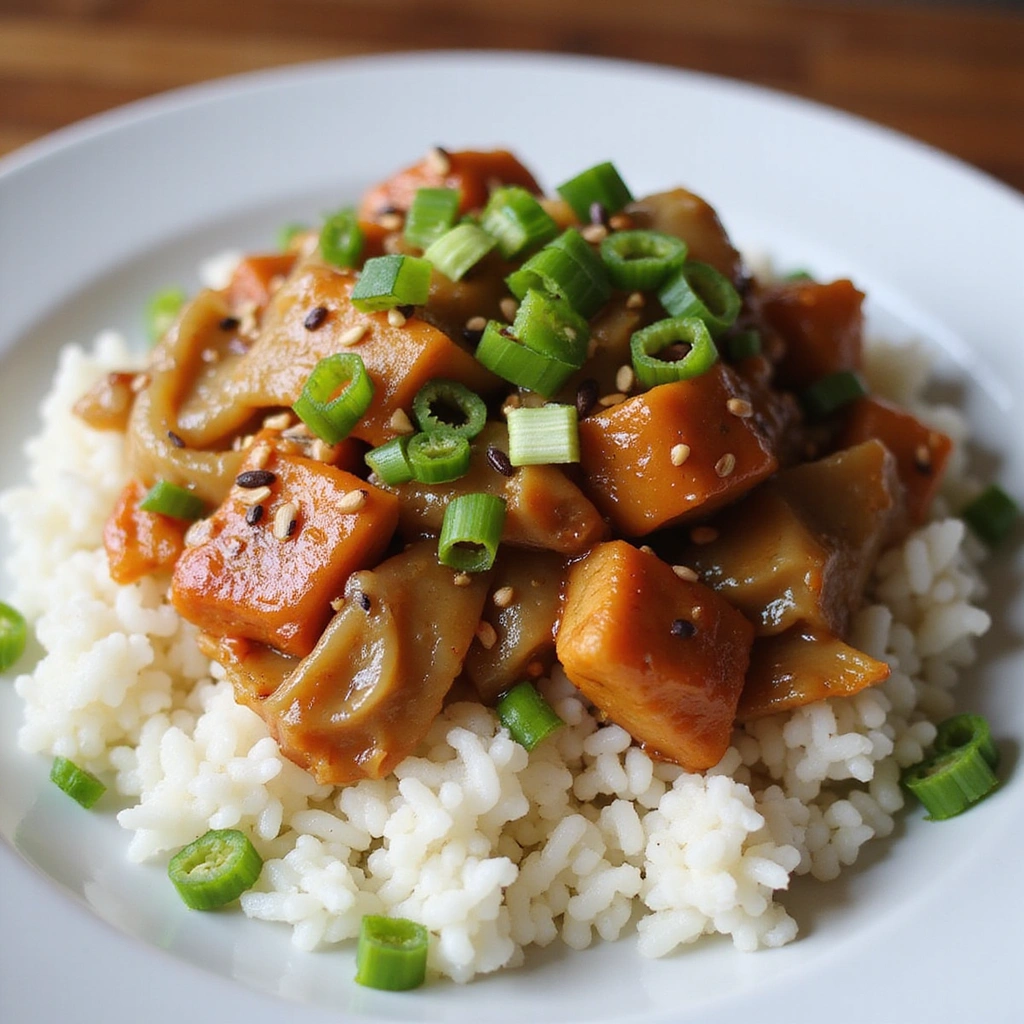
Once everything is well combined, toss in the chopped scallions for a fresh finish.
Remove the wok from heat and let it sit for a minute to allow flavors to settle.
Serve hot over steamed rice or noodles for a complete meal.
Garnish with additional scallions or sesame seeds for presentation.
Critical Timing and Temperature Guide
Cooking Pork: Cook the pork for 4-5 minutes, ensuring it’s browned and cooked through. Look for a golden color and a firm texture. Avoid overcooking, which can lead to dryness.
Stir-Frying Vegetables: Stir-fry the cabbage and carrots for 3-4 minutes, maintaining a high heat. The vegetables should be tender yet crisp. Overcooking will result in mushiness.
Thickening the Sauce: Allow the sauce to simmer for about a minute after adding it to the stir-fry. It should thicken slightly and coat the ingredients. If it doesn’t thicken, cook it a little longer while stirring continuously.
Pro Tips for Chinese Pork And Cabbage Recipes Easy Weeknight Dinner
• Ingredient Selection: Choose fresh, high-quality pork and crisp cabbage for the best flavor and texture.
• Preparation Secret: Marinating the pork even for a short time can significantly elevate the flavor.
• Temperature Management: Ensure your wok is hot enough before adding ingredients to achieve a nice sear.
• Texture Enhancement: Stir-frying quickly over high heat helps retain the crunchiness of the vegetables.
• Flavor Layering: Adding aromatics at the right time builds depth in your dish.
• Make-Ahead Strategies: Chop vegetables in advance and store them in the fridge to save prep time.
• Restaurant-Quality Finishing Touches: Consider garnishing with fresh herbs or toasted sesame seeds for visual appeal.
• Equipment Optimization: Use a well-seasoned wok for the best non-stick results.
Troubleshooting Common Issues
• Overcooked Pork: If the pork ends up dry, it’s likely due to overcooking. To prevent this, keep an eye on the color and texture, and remove it from heat as soon as it’s no longer pink.
• Soggy Vegetables: This can happen if you don’t stir-fry at high heat. Ensure your wok is hot and keep the mixture moving to avoid steaming the veggies.
• Flavor Too Bland: If the dish lacks flavor, consider adjusting with more soy sauce or adding a splash of rice vinegar for acidity.
• Too Saucy: If the dish is too saucy, continue cooking to let some liquid evaporate until you reach your desired consistency.
• Uneven Cooking: To avoid this, ensure that all ingredients are cut to similar sizes and cooked in batches if necessary.
Variations and Regional Differences
• Shanghai Style: This variation incorporates shrimp along with the pork, adding a unique depth of flavor, and often includes a sweeter sauce.
• Spicy Sichuan Version: This style adds chili oil and Sichuan peppercorns for a spicy kick, enhancing the dish’s complexity.
• Vegetarian Adaptation: Substitute pork with tofu or tempeh for a plant-based version that still captures the essence of the dish.
• Modern Interpretations: Some contemporary recipes incorporate quinoa or brown rice instead of traditional white rice, adding a nutritious twist.
Food Science Behind the Recipe
• Maillard Reaction: This browning reaction occurs when cooking the pork and adds complex flavors and aromas, enhancing the overall taste of the dish.
• Emulsification: When mixing the sauce with the stir-fry, oils and water-based ingredients combine to create a cohesive flavor profile that clings to the food.
• Caramelization: As the sugars in the vegetables cook, they caramelize, adding sweetness and depth to the dish, balancing the savory elements.
Frequently Asked Questions
What’s the most common mistake people make when preparing Chinese Pork and Cabbage? Overcooking the pork is a frequent issue. To prevent this, cook the pork just until it’s no longer pink, removing it from heat promptly.
Can I prepare components of this dish in advance? Yes, you can chop vegetables and marinate the pork a day ahead. Store them separately in the fridge to maintain freshness.
How do I adapt this recipe for dietary restrictions? For a gluten-free version, use tamari instead of soy sauce and avoid oyster sauce. Substitute pork with a protein of your choice.
What’s the best way to store and reheat leftovers? Store leftovers in an airtight container in the fridge for up to 3 days. Reheat in a skillet over medium heat until warmed through, adding a splash of water if needed.
Can I freeze this dish? Yes, freeze the stir-fry in a sealed container for up to 2 months. Thaw in the fridge overnight and reheat in a skillet.
What wine or beverages pair best with this dish? A light-bodied red wine or a chilled white wine like Riesling complements the flavors beautifully.
How can I scale this recipe up for a crowd? Simply multiply each ingredient by the number of servings you need, and make sure to stir-fry in batches to avoid overcrowding the wok.
What side dishes complement this recipe best? Steamed rice or fried rice pairs excellently, along with a side of stir-fried green beans for added color and nutrition.
How do professional chefs elevate this dish for restaurant service? Chefs often add a finishing touch of fresh herbs or microgreens just before serving to enhance flavor and presentation.
Serving and Presentation Guide
• Traditional Presentation: Serve the dish in a large bowl, garnished with scallions and sesame seeds, alongside a bowl of steamed rice.
• Modern Plating Ideas: Use a white plate for a minimalist look, stacking the pork and cabbage in the center and drizzling with extra sauce for elegance.
• Accompaniment Suggestions: Pair the dish with pickled vegetables or a light cucumber salad to balance flavors and add freshness.
• Special Occasion Presentation: For celebrations, consider using individual serving dishes and adding edible flowers for a festive touch.
Conclusion
I hope this Chinese Pork and Cabbage recipe becomes a beloved addition to your weeknight dinner rotation.
With its delightful flavors and simple preparation, it’s a dish that brings family together.
Give it a try, and watch how quickly it becomes a favorite in your home.

